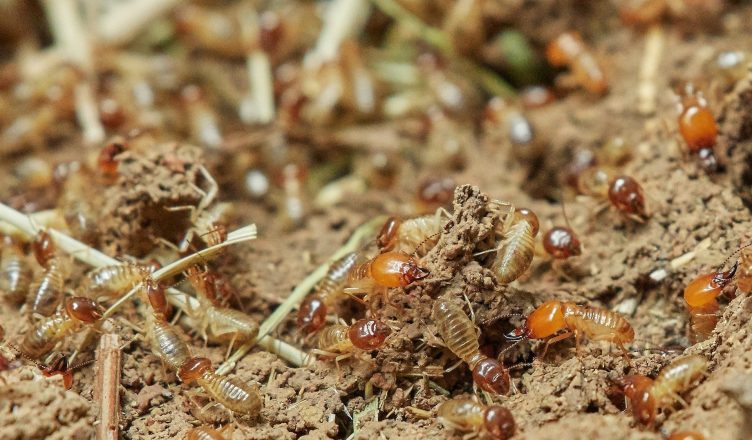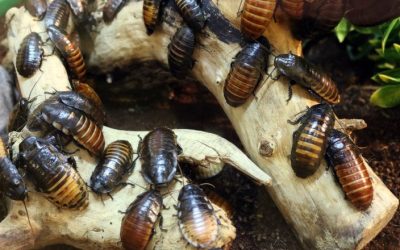Southern California Termites – Is Your Home Infested?
Do you suspect you have termites? If so, you are definitely not alone.
According to estimates by The National Pest Management Association (NPMA), American homeowners spend $5 Billion repairing property damage caused by termites each year. In fact, more substantial damage is caused by termites than storms, fires, and floods combined. Sadly, home insurance policies don’t always help when termites have damaged your home. This means that time is of the essence. If you think you have a termite infestation, you need termite pest control fast, before more damage can be done.
Call Final Exterminators, now serving customers in Moreno Valley and Riverside to receive a free and honest quote, and we will exterminate your termites fast.
Until then, here is how to identify the various species of termites and what to do if you have an infestation in Moreno Valley, Riverside, or any of the surrounding areas.
Types of Termites in Moreno Valley
Drywood Termites
Drywood termites are the most prevalent to our area and love to infest structures closest to the beach. The alates, which are the swarmers of the species, have two sets of wings. Swarmers then shed the wings after swarming. You can identify drywood termites by the bodies of swarmers without attached wings.
Drywood termites build nests (called galleries) in attics, inside the walls of your home, and in your garage.
The insects tend to infest homes late in summer and through the fall. They can get in through vents, cracks, knotholes, and sections of exposed wood. Aside from your home, drywood termites may find utility poles, dead trees, and stored lumber to form their galleries.
Drywood termites can cause extensive damage. The pests will chew their tunnels inside wooden beams, walls, and other wooden objects. This has the effect of weakening the home, leading to costly repairs.
Subterranean Termites
Like other kinds of termites, subterranean termites develop a caste system in their colonies. The alates (swarmers) tend to be dark brown to black in color. They grow to a quarter-inch to half-inch long and have two pairs of wings that are close to being equal in length.
Workers have no wings at all. They grow to be a quarter-inch or less in length and look cream-colored.
Soldiers also don’t have wings, but they have large mandibles and act as the colony’s defenders. They are creamy white in appearance, but their head is a darker shade of brown.
Subterranean termites form nests in moistened soil, whereby they will tunnel underground in search of wood. They tend to enter homes through cracks in the foundation, or anywhere wood comes in contact with soil.
Subterranean termites cause immense damage to American homes each year. In addition to consuming your home, they also eat books and cellulose-based products, as well as plant-based goods.
Some colonies of subterraneans have more than one egg-laying female, which can cause the nest to expand rapidly into a colony consisting of tens of thousands of termites. The insects can invade your home without detection and the damage they cause isn’t always noticeable. Look for the presence of winged swarmers, mud tubes and evidence of damaged wood if you suspect a subterranean termite infestation.
Formosan Termite
Formosan termites are a type of subterranean termite that is among the more aggressive and destructive of the species. In fact, their nickname is the super-termite because of their tendency to consume wood rapidly.
Formosan termites grow to be a half-inch long. The alates of the species are yellowish-brown with a thick covering of tiny hairs on their wings.
The easiest way to differentiate between a Formosan termite from the other types of the species is to look for an oblong head. Other termites have rectangular heads. Formosan termites also exhibit more aggressive behavior when defending their nests compared to other termite types.
When they are disturbed, the soldiers release a white liquid used for defense.
A single colony can contain several million, as opposed to subterranean that exist in the tens of thousands. They can forage up to 300 feet in the soil, consuming as much as 13 ounces of wood each day. Over a span of three months, Formosan termites can completely decimate a structure.
The insects are usually found in Hawaii and the Southeastern U.S. Though they have also been seen in a few California homes.
Formosan termites can enter your home from wood that touches the soil and by traveling by way of their mud tubes. Openings caused by unsealed joints and cracks are sometimes used to gain entry into your home, but aerial colonies can also infest your roof and other above-ground spots.
They prefer moist wood and wood that is located in places where there is excessive moisture in the soil, such as where water puddles and gathers around your home.
How to Know if Your Home is Infested?
Termite damage is not always immediately apparent. Identifying an infestation will require some investigative work, as the damage is largely confined to the interior of the structure.
You can identify a termite infestation in several ways.
- Termite Swarms: Termites tend to swarm when they begin new colonies. Look for swarms of tiny winged insects near windows or lights in the spring or fall.
- Piles of Termite Wings: Termites shed their wings as they swarm. If you see a pile of discarded wings, chances are you have a pest control problem.
- Droppings: Drywood termites produce tiny fecal pellets in the shape of a hexagon. Look for small piles in your attic or below sections of infested wood.
- Structural Damage: If you notice crumbling drywall, small holes in wood, loose window frames, or sagging doors, that could be a sign of a termite infestation.
- Tube-Like Nests: Subterranean termites make mud tubes that are about the size of a pencil. The tubes are used to transport the termites from the soil and into your home without exposing them to sunlight. Look for these tubes in and around your home’s foundation.
Types of Termite Pest Control
At Final Exterminators, we use specialized treatments that depend on the scope of the infestation and the type of termite we are dealing with. There are three primary methods of termite control.
Spot Control:
Once an infestation is identified, we can apply a foam, liquid, or pesticide to the area. While this pest control option can be effective, it may not treat the entire infestation.
Fumigants:
Using a fumigant is the quickest and most efficient way to neutralize a termite problem. Unfortunately, the option cannot be used around humans or animals, so everyone (including pets) will need to leave the home before treatment can begin. This method of treatment can take anywhere from a couple of hours to a few days.
High Heat:
This termite control option is ideal for smaller homes. Like fumigation, humans and pets must be absent from the home before the treatment can begin, though high heat termite control is considered to be non-toxic. Once activated, the treatment heats inside the walls to a factor of 120 degrees to kill all signs of pests.
If you have an infestation, don’t think that you can control the problem all on your own. Thorough pest control requires the services of a trained and experienced exterminator.
How to Prevent Future Infestations
Once your home has been treated for termites, you can prevent future infestations by eliminating the conditions that attracted the critters in the first place.
Fix Plumbing Leaks: Any leaky pipes or hoses can attract termites in droves. Call the plumber to detect leaks that may be bringing termites to your property, especially those occurring inside the walls.
Repair Gutters: Walk around your home and perform a full gutter inspection. This is to ensure that your gutters are effectively moving water away from your home. If not, you could be putting your home at risk of a future termite invasion.
Prevent Wood-To-Soil Contact: Walk around the foundation of your home and make sure there is a separation between the soil and the wood. If not, termites might be able to get in to inflict future damage.
Move the Mulch: Likewise, if you see mulch next to your home, move it before termites find it an enticing point of entry.
Request a Termite Pest Contol Comapny Moreno Valley & Riverside CA
If you suspect that you have a termite infestation, you deserve a professional opinion from a skilled and experienced pest control expert. Contact Final Exterminators when you need termite pest control for your home or office. We serve Moreno Valley and Riverside and look forward to serving you. Call now to receive a free and honest quote and get the total termite extermination and ultimate protection you deserve.
Get Started Now. Give us a call at (800) 953 1397




0 Comments